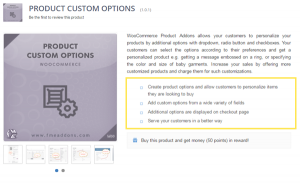As the Internet has aged, we’ve watched it evolve to account for even more users and web properties. Similar to the way we tacked ZIP codes onto the map and area codes into the phone book, we’ve gradually added more and more domain extensions to make the web more dynamic.
In recent years, these domain extensions have moved beyond the traditional abbreviations and meaningless acronyms. This has given brands using the so-called “generic,” top-level domains a chance to increase the impact and memorability of their web presence.
We’re all familiar with the more common ones, like .com, .net, .gov, and .org. We’re also familiar with country tags, like .au and .de. But now we’re starting to see .club, .movie, .news, and many others. “Generic” doesn’t mean these new domains don’t have meaning. They are generic words — as opposed to brand name extensions (.nike, .bmw, .barclays) or geographic extensions (.nyc, .berlin, .london) — but that doesn’t make them bad in any way.
In fact, this is an exciting opportunity for brands to position themselves in the public eye in ways they never could before.
Consider, for example, Google’s use of the domain abc.xyz for announcing its new holding company Alphabet. This cleverly represents the alphabet in a way that abc.com or alphabet.com couldn’t have — and stands out far more than the other two possibilities could.
Startups are getting on the bandwagon as well. Justin Kan (who used .tv — the country code for the island Tuvalu — very effectively with justin.tv and twitch.tv) recently launched a music community called thedrop.club.
Then there’s the new app Glitter, which uses the domain glitter.club. Similarly, design firm Emery Creative uses emery.design. In each of these cases, the domain name is a logical, organic extension of what the brand wants to convey about its identity.
Brand Domains of the Future
According to nTLDStats, 739 new top-level domains were delegated to the Internet — out of approximately 1,300 — with new extensions set to roll out over the next year and a half. Collectively, a little more than 7 million registrations have occurred under the new extensions.
Currently, the opportunity to apply to launch a new extension is closed. Those that are operating now — or are soon to launch — were applied for during an Internet Corporation for Assigned Names and Numbers (ICANN) application window that closed in January 2012. While the details have not been set, there are tentative plans to open a second round of applications.
When the next window does open, brands that didn’t apply for their own extensions during the first round should seriously consider it. Think about how having a brand domain could build trust, ensure control over your namespace, and combat phishing scams.
The Domains for Today
With the introduction of these new domains, some businesses are concerned about which they should be considering, whether for brand protection or for active use. Smart marketers will look at using those most relevant to their companies. If you’re a photographer, for example, yourcompany.photography would make sense, while yourcompany.pizza would only be relevant if you specialize in pictures of pizza.
The current extensions are also an opportunity for companies to get a relevant “category killer” domain. In the early .com days, only the fast movers were able to capitalize on them. While Barnes & Noble owns book.com, Amazon could snatch up book.club or book.shop, for example.
So how can you make the most of these new extensions? Check out the following tips:
- Think in multiples. These days, you’re no longer restricted to a single brand domain. Branch out in a way that provides shortcuts to different aspects of your business. While brandname.com can serve as your company’s main portal, brandname.app could point to your app, brandname.news to your press releases and updates, or brandname.club to your rewards program.
- Use them for microsites and campaigns. Think of creative ways to make scaled down campaigns, like McDonald’s Corp. did in Germany with bigmac.rocks.
- Bridge platforms. Many businesses use unique domain names to better brand their presence on different platforms. Take, for instance, ashleybridget.club — it directs web users to the teen bracelet maker’s Facebook page.
These are just three ways brands use new extensions to discover exciting new marketing opportunities, but there are a lot of great ideas out there. The industry trade group, the Domain Name Association, has set up a website at inthewild.domains. There, you can find many examples of companies using domains creatively.
The bottom line: As the Internet expands, so do your opportunities for branding.
It’s time to think beyond the .com and bring your web presence into the future.
Digital & Social Articles on Business 2 Community(126)





